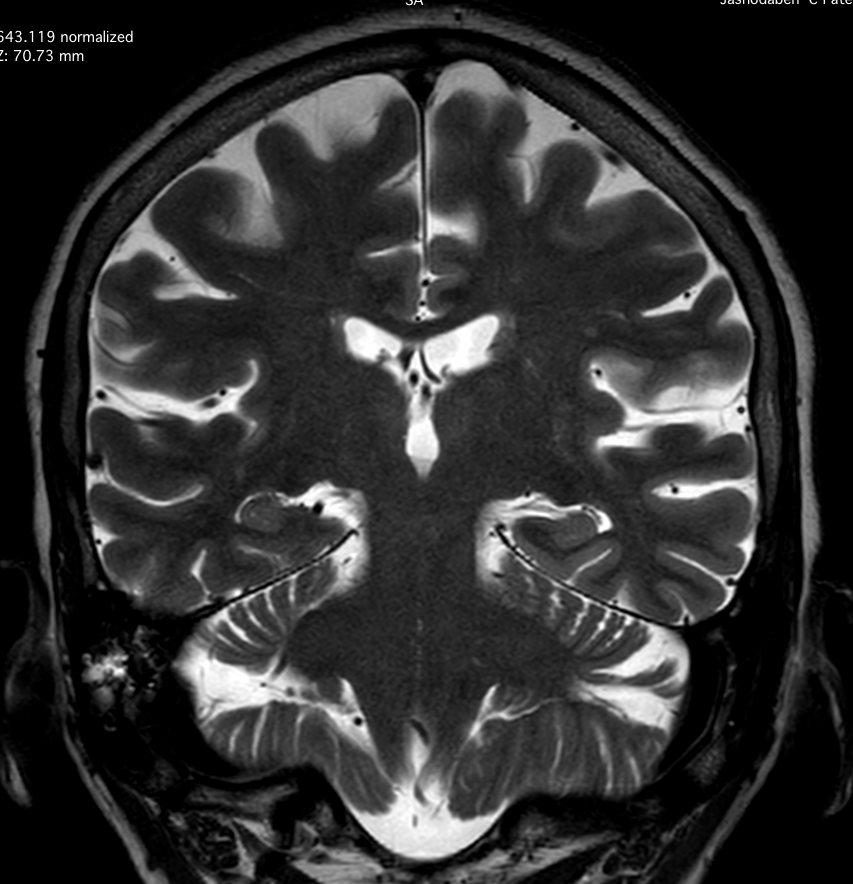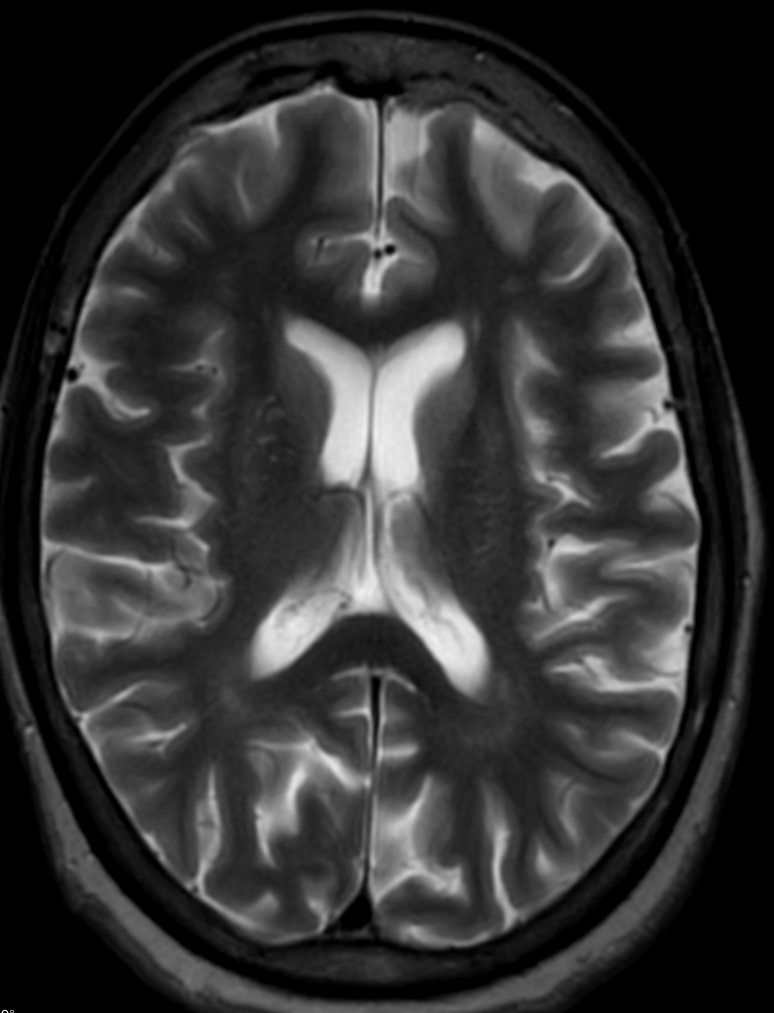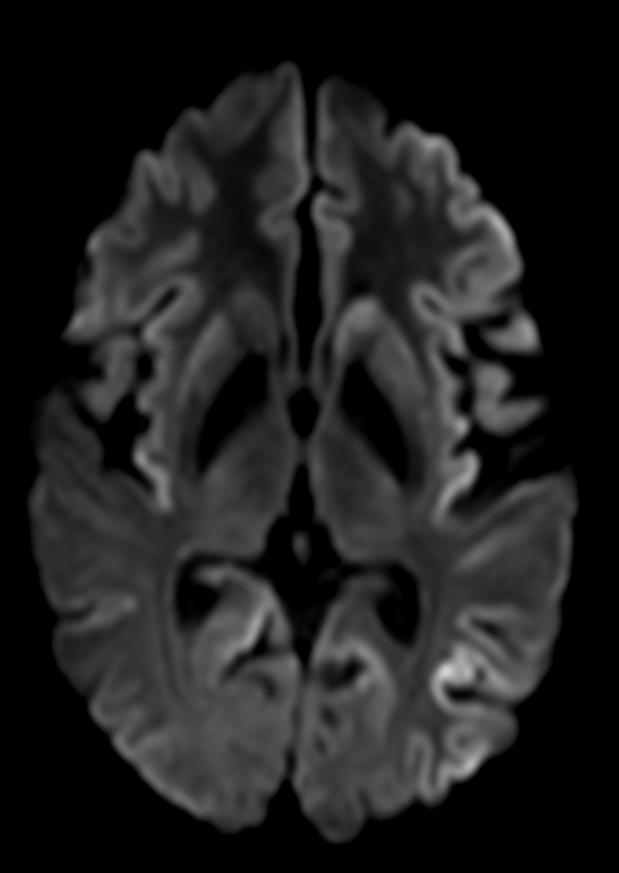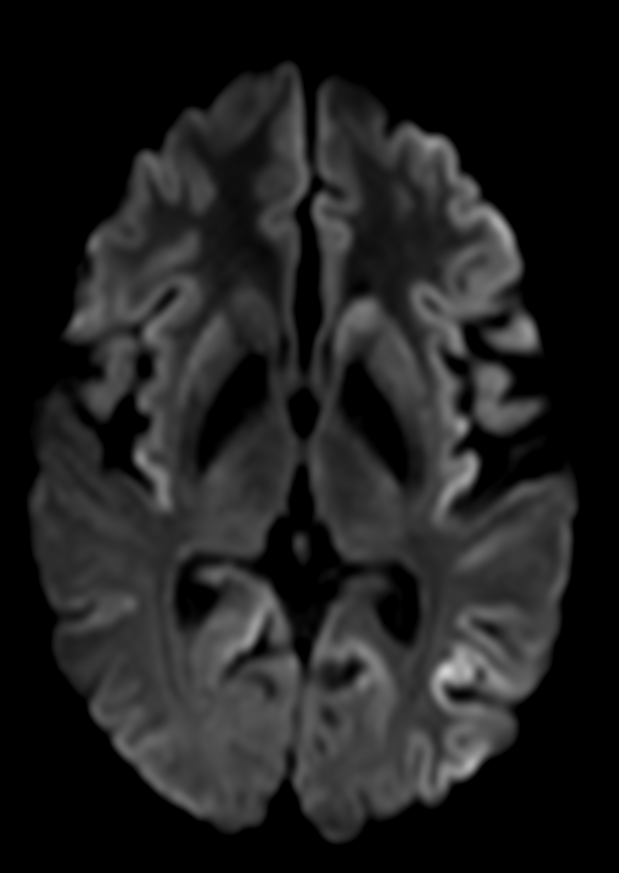Creutzfeldt-Jakob disease (CJD).
3.0 T M.R.I. – BRAIN
Clinical Information: Abnormal behavior and memory loss.




Findings:
- DWI restriction noted involving left frontal, bilateral parietal, bilateral insular & left temporal cortices. Changes are bilateral asymmetrical in pattern.
- Some of these areas appear hyperintense on FLAIR images and show signal drop on ADC.
- Diffusion restriction also noted at left basal ganglia that appears hyperintense on FLAIR images.
- Findings suggest possibility of Creutzfeldt-Jakob Disease (CJD).
DISCUSSION:
- Creutzfeldt-Jakob disease (CJD) is a rare, rapidly worsening brain disorder that causes unique changes in brain tissue and affects muscle coordination thinking, and memory.
- The two main symptoms of CJD are:
- Severe mental deterioration and dementia
- Involuntary (unwanted) muscle jerks (myoclonus) or muscle movement.
Article Tags:
3.0 T · BRAIN · CJD · Creutzfeldt-Jakob disease · MRI
Article Categories:
3.0 MRI · Case Study · Uncategorized
Likes:
0 




